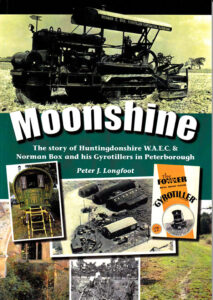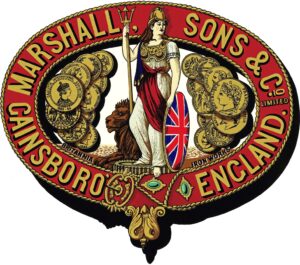Marshalls during World War 2
- At March 20, 2020
- By Andrew Birkitt
- In History
 0
0
With the upcoming 75th anniversaries of the end of World War 2 and the introduction of the first production Field Marshalls, I thought that it might be a good idea to highlight what happened during the war years at Marshall’s, leading up to the birth of the Field Marshall.
Joint Managing Directors, Ashley Ward, and Mark Burton were summoned by the Admiralty within days of the outbreak of World War 2. The Admiralty requested that no more orders should be accepted for Marshall’s peacetime products and that the company should build a steel foundry. After much deliberation the directors agreed to only accept orders for boilers, fabrication work, ferrous and non-ferrous castings, Smithy work and thrashing machines. Within a few months, the company’s order book stood at over £1 million, of which the government contracts amounted to £843,000.
Early in 1940, due to the loss of Swedish supplies, Marshall Richards were given top priority to create a complete plant for Rolls Royce, to manufacture steel and copper wire products, which were urgently required for their aircraft engines. In 1940 Marshalls received additional major contracts from the Admiralty for 4” twin gun mountings to be delivered at the rate of six per month (See below).
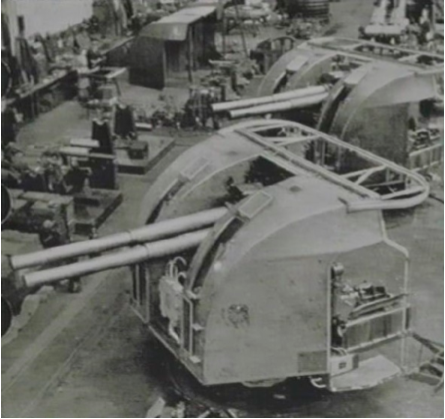
These were followed by orders from the War Office for – 5” gun mountings, twin-barrel low angle anti-attack gun mountings, destroyer ammunition hoists, gun carriages, 2-pound anti-tank gun mountings, 2” anti-attack guns, and 17-pound anti-attack guns.
Following the ordeal of Dunkirk in the summer of 1940, over 1,000 men from the works immediately enlisted for the Local Defence Volunteers, later to be re-named the Home Guard. Others were involved as air raid wardens, fire watchers, aircraft spotters and first-aid workers. Their periods of duty were carried out in their spare time after a hard day’s work, often after long periods of overtime.
In 1941, an order for 2,000 agricultural tractors was placed by the Ministry of Agriculture, which was to be spread over a two-year period. Marshalls announced that they hoped to build 300 Model M tractors a year without affecting its war work,
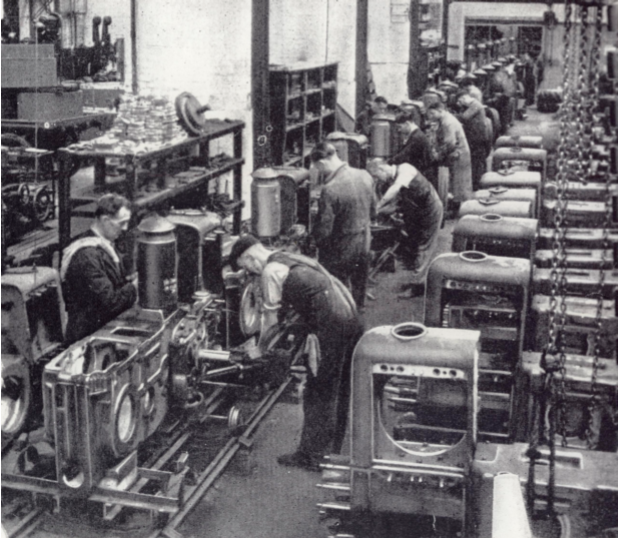
but that they would need £60,000 worth of additional tooling in order to meet their requirements. The Ministry of Supply, however, refused this request, stating that the cost of any capital machinery supplied would have to be recovered from the tractor’s selling price and that no grants would be given.
However, when the German submarine menace became so great in the summer of 1942, the Ministry of Supply relented, agreeing to allocate the necessary machine tools, as and when they were needed.
Also in 1942 the courts approved a request from the Marshalls board to remove the words “Successors” from the company name, upon final payments of an outstanding debt amounting to £500. The company’s name reverted back to that of Marshall Sons & Company Ltd once again.
A congratulatory telegram from Whitehall was received by Ashley Ward, upon the completion of the 4” twin gun mountings contract, which was immediately followed by new orders from the Admiralty for 4” single gun mountings. The Ministry of Supply placed a welcome order for the supply of 230 RD diesel road rollers.
The application of steam heating to tea dryers had proved an outstanding success in the early part of WW2, so in 1943 the Board of Trade granted Marshall’s material licenses enabling them to resume the manufacture of a limited range of tea machinery.
In February 1943 George Bryden signed a consultancy agreement with Freeman Sanders Engine Company Limited. Marshalls had already had dealings with Freeman Sanders in 1938 which had resulted in an agreement to use Fowler Sanders vertical diesel engines wherever possible in Marshall products, especially road rollers. The 1943 agreement referred only to horizontal engines though. Bryden felt that the application of Freeman Sanders patents, which mainly concerned the combustion chamber design, would substantially increase the power unit of the Model M tractor engine without unduly increasing the stresses in the engine or the cost of manufacture.
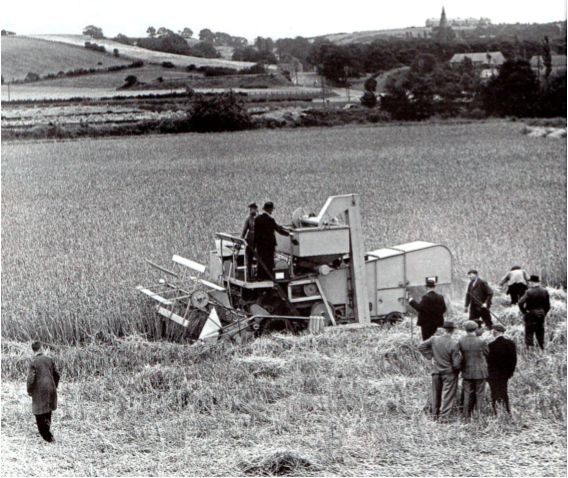
The first Marshall E7 self- propelled combine harvester first appeared in 1943, powered by two Ford 26hp petrol engines, one for driving the traction and one for thrashing the grain.
The Admiralty placed an order with Marshalls in 1943, for two midget submarines, known as X Craft, following on from a prototype that had been built by Vickers at Barrow-in-Furness. The entire manufacturing operation had to be conducted in total secrecy, under the Official Secrets Act, so a section of No. 1 Yard at Britannia Works had to be sealed off so that no unauthorized personnel could gain access or see inside.
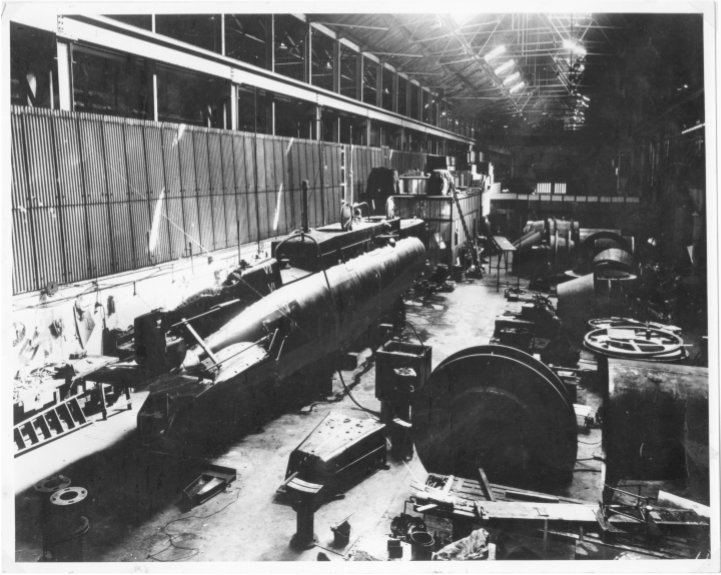
The finished submarines were disguised as large motorboats before being placed on special rail trucks for transportation to Clydeside. The submarines were approximately 60 feet long by 6 feet in diameter and constructed of 3/8” thick plate. Between 1943-1945 two of the 12 Class X.5 midget submarines were built at Marshall’s in No. 1 Yard, ie numbers X24 & X25, of which X24 survived the war and is on display at Gosport Museum.
As early as January 1943, Marshall’s design engineers had started designing a replacement for the successful Model M, but the initial stages of development didn’t start until January 1944. The new tractor would retain some of the Model M characteristics but would have a new streamlined look. Due to the lack of raw materials during wartime Britain, an initial mock-up was built from Model M parts and wooden panels constructed by the Pattern Shop. These included the fuel and header tanks, platform and mudguards. (See photo below)
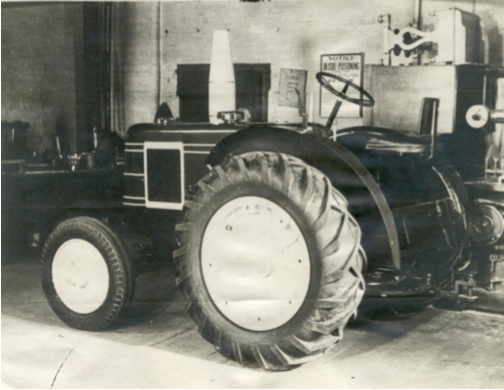
This concept was given the approval by the Board for the development to proceed. It was initially proposed that three prototype tractors were to be built, but due to the demand for wartime artillery, the tractors were given a low priority and only one tractor was given the go-ahead for testbed work. The prototype was built during 1944 and immediately put through rigorous evaluation and development fieldwork tests, at the Marshall owned Bransby Farm near Gainsborough. The results proved to be very successful and the tractor, finished only in buff primer, was then dispatched to the NIAE’s test centre at Silsoe, where results again matched all expectations.
By the end of 1944, Marshalls got permission from the Ministry of Agriculture to commence the manufacture of their new Field Marshall Series 1 tractor. The project was to be implemented on a purely commercial basis, as no assistance or order was placed by the Ministry.
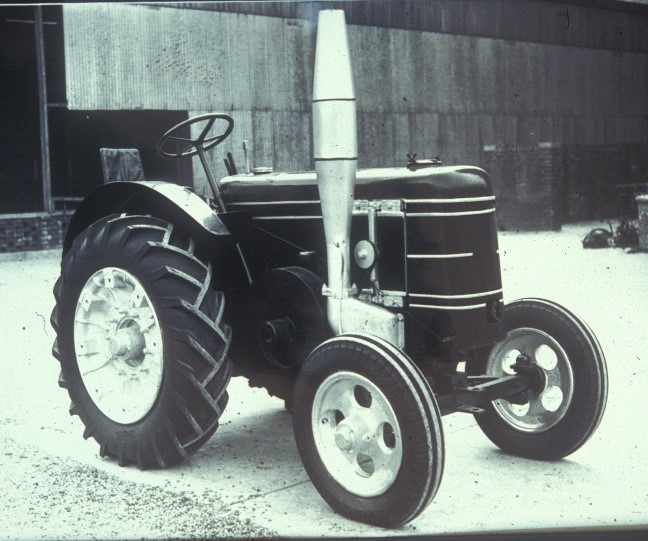
The prototype was returned to Britannia Works, where it was cleaned, inspected and re-sprayed, ready for its new role as a ‘Press Release’ tractor. The photo on the left shows the tractor at Trent Works in January 1945.
As a result of the NIAE tests a further two prototypes were built on trestles, followed by a further twelve on the newly constructed production assembly line in the Tractor Shop. These twelve tractors, starting with serial number 2001, and not having a cartridge start, were distributed to Marshall’s most loyal customers for evaluation, to obtain valuable feedback and to eliminate any design problems.
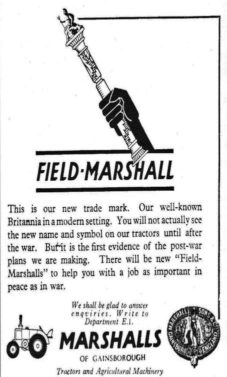
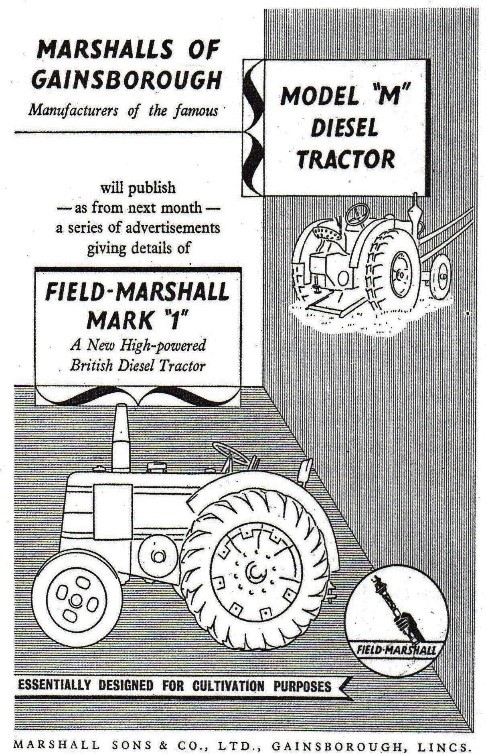
As can be seen in the advert far left of 1944, there would be a new aluminium badge of a hand carrying a torch portraying the Britannia emblem at its top to be fitted to each tractor, but note, not until hostilities had ended. The second advert, on the right below, is from June 1945, announcing the new tractor, showing the profile of the Field Marshall tractor for the first time.
The end product of almost two years of intense research and development would
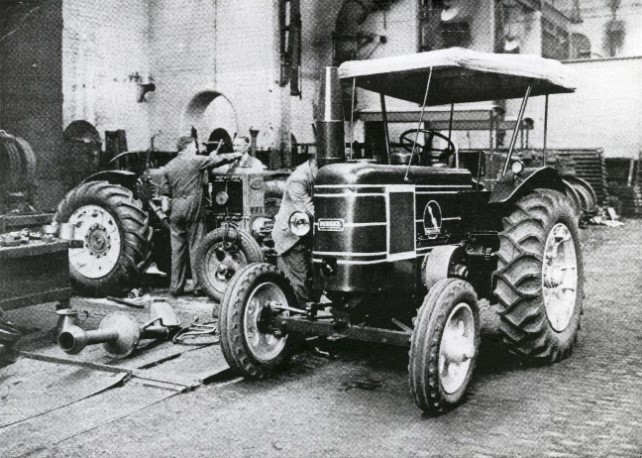
result in a new tractor, (the price when new was £550), that would be part of a new marketing strategy and incorporate the Marshall name in all its various products. Along with the Field Marshall, there would also be new identities for the Road Marshall and Grain Marshall. The photo on the left shows a 1945 pre-production Mark 2 Contractor’s model at Britannia Works – note the exhaust is now painted green.
Marshalls products 1939 to 1945 also included:-
• Both the wooden and the all-steel SM thrashing machines were manufactured with a total of over 2,000 machines built (exceeding the combined total of all the other British manufacturers).
• Several hundred portable steam engines, many finding their way to the Forestry Commission, who performed work of great importance by minimising timber imports.
• Only a few traction engines were produced.
• Both steam and diesel road roller production continued as they were in great demand for airfield and airstrip construction preparatory to the invasion of Europe.
• Marshall Richards continued to make a unique and vital contribution to the war effort
• The boiler shop at Marshall’s was kept very busy supplying repaired and new boilers to replace bomb damaged plant.
• Large quantities of gun parts and assemblies for the Admiralty.
At the end of World War 2, Marshalls emerged in far better shape than they had done in 1918. The ending of profitable wartime government contracts, however, meant that Marshalls had to look towards the agricultural market again, as the foundations of their post-war activity. The company’s financial position backed by their management team, the new product range, and the market potential, all gave grounds for confidence in the years to come.
